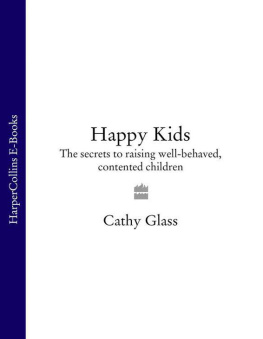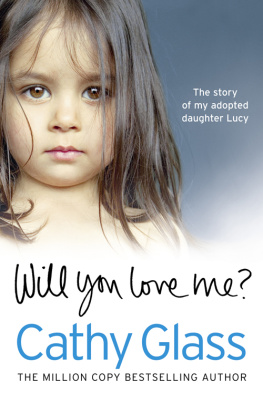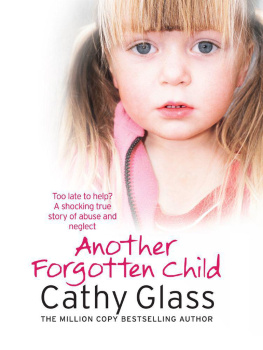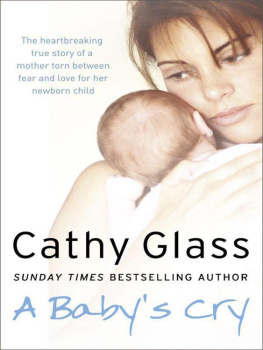Cathy Glass
Happy
Kids
The secret to raising well-behaved,
contented children

Contents
Why another book on child rearing? The idea came from my readers. After the publication of my fostering memoirs I received thousands of emails from parents and childcare workers around the world. They sent their love and best wishes for the children I had written about, and also praised me for the way I had managed the childrens often very difficult behaviour:
I tried that method and it worked
What a good idea
My son used to be very controlling so I handled it as you did and (amazingly) he stopped.
Id never thought of dealing with my daughters tantrums that way before
I now talk to my children rather than at them.
You should write a book!
Their comments made me realise that the techniques I use for successfully changing childrens unacceptable behaviour were not universally known indeed far from it. I wasnt sure I knew what I did, only that it worked. So I began analysing how I approached guiding, disciplining and modifying childrens behaviour, the psychology that lay behind my techniques and why they worked. This book is the result.
As a parent you want the best for your child: you want them to be a happy, self-assured individual who can fit confidently into society. As a parent you are responsible for making that happen. There will be others involved in forming your child teachers, siblings, friends, relatives, etc. who will have some influence on your child, but ultimately your son or daughter will be the product of your parenting, good and bad.
I often feel it is a great pity that, as parents, we are not given training in the job of child rearing. No other profession would unleash an employee on a job without basic training and on-going monitoring, but when we become parents, the baby is put into our arms and, apart from a few words of encouragement from a kindly midwife and weekly trips to the clinic to weigh the baby, were left to get on with it. Were supposed to know what to do, having somehow absorbed along the way the contents of volumes of baby and child-rearing manuals, and the accumulated knowledge of a century of child psychologists. The most important job in the world is left to instinct', without a single course on the techniques of child rearing. Little wonder we quickly feel inadequate when baby doesnt do as expected. And why should he? He relies solely on us, and yet we dont always know what to do.
Unlike parents, as a foster carer I receive regular training in all aspects of child development, including teaching children how to behave correctly. My 3Rs technique is based on this training and on years and years of experience Ive had plenty of children to practise on during my fostering career! The 3Rs are Request, Repeat and Reassure. The technique is incredibly easy and successful, and can be applied to all ages.
If you have older children, I suggest you still start at the beginning of this book. Read about the 3Rs in relation to the early years, where I explain the basis of the technique, so that you can see where its roots lie and learn the principles. Once you know these, you can use the 3Rs with children of any age to bring them up to be contented and well behaved.
The 3Rs = success.
Note: the term parent as used in this book includes the person who performs that role and is the childs main care-giver.
CHAPTER ONE
First Years
In the last fifty years advice on looking after baby has altered dramatically, and has almost gone full circle from the 1950s strict routines of four-hourly feeds and plenty of fresh air, through Dr Spocks liberation of the 1960s where mum and baby knew best, to the 1970s embrace with the tribal approach, where baby spent all day in a sling strapped to one of its parents and all night in their bed. Recently there has been a move back to the stricter routine, as many mothers return to work and exhausted parents grapple with feeding on demand and the following days hectic work schedule.
This book is concerned with childrens behaviour, so I shall not be discussing the pros and cons of different baby-rearing regimes, nor the basics of looking after baby, for example feeding and bathing. There are already thousands of books on the market that do this, and most parents will find they adapt an approach which best suits their lifestyle. However, a working routine is an intrinsic and important part of the 3Rs and successfully raising a contented baby comes down to how you deal with two things: sleep and crying.
Sleep
Sleep takes on a whole new meaning with the arrival of a baby, simply because babies dont. Well, they do, but not necessarily when the parents need to sleep, which is at night, and preferably for seven unbroken hours. A newborn baby cant sleep through the night, as it cant hold enough food in its tiny stomach. So nature has built in a fail-safe way of making sure baby is fed: mouth wide open, it screams the house down. This hunger cry is not the cry of a child who has hurt itself and needs comforting but natures inbuilt response to hunger, which guarantees that baby cant be ignored, is fed and therefore survives and thrives. We have to accept that babies cry when they need feeding.
But why is baby still crying when it has been fed and changed? Good question. While baby manuals and child psychologists offer a wealth of possibilities for a baby not settling from the trauma of birth to sheer bloody-mindedness no one knows for sure. Other reasons may include being too warm, or cold, needing to be held, boredom, tiredness, thirst, colic and illness, but the end result is the same: crying.
Baby has just spent nine months tucked up snugly in a warm, wet womb, and no matter how pretty the nursery, its hardly a good substitute for this previous all-enveloping embrace well, not to begin with at least. If baby is to settle when you put him to sleep or go back to sleep if hes woken he will require a lot of reassuring. You will need to reassure baby that his needs will be met, as well as teaching him what you want in respect of routine, sleeping, etc. This can be achieved by using the 3Rs.
Request, Repeat and Reassure
Assuming baby is not ill (in which case seek medical advice), that the room is the right temperature and that baby is fed and clean, resettle the crying baby using the 3Rs: Request, Repeat and Reassure. First, Request baby to go back to sleep by tucking him in and settling, preferably without picking him up. Come out of the room, if baby has his own room, or move away from the cot if baby is in the parents room. Keep the lighting to a minimum just enough for you to see what you are doing and dont make a lot of noise. It was dark in the womb and relatively quiet, and a sudden noise or bright light will startle baby.
If baby now settles and goes back to sleep, then you dont need the second two stages in the 3Rs well, not this time at least. But if baby is still screaming, then go to stages two and three. Repeat the procedure by going quietly into babys room or to the cot, and Reassure by tucking him in and resettling him. Then come out or move away. If baby is colicky, then change his position and wind him to release the trapped air, preferably not by taking him out of the cot but by leaning over to do this. Then come out or move away.
Still screaming? Do it again. Repeat and Reassure. This time with some verbal reassurance Sshhh, sshh, there, there sleep time in a low, calming voice. Just a few words so that baby doesnt feel alone and is reassured by the sound of your voice, which he will already be used to, having heard it in the womb and since birth.
Next page
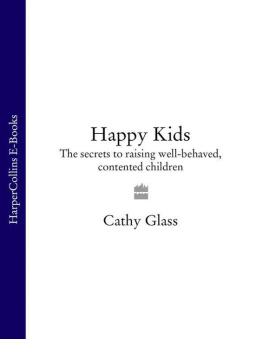
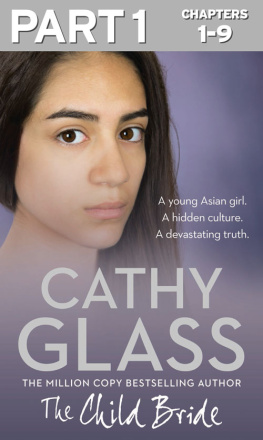
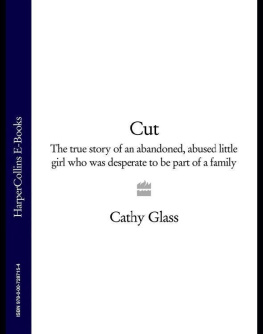
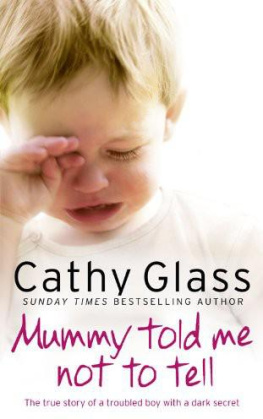
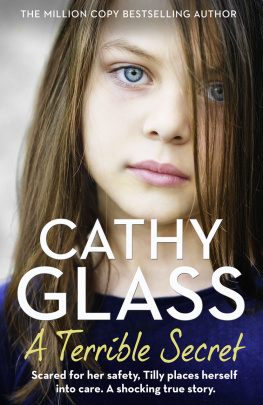


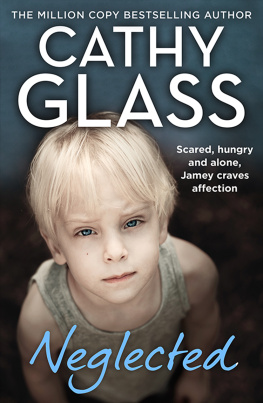
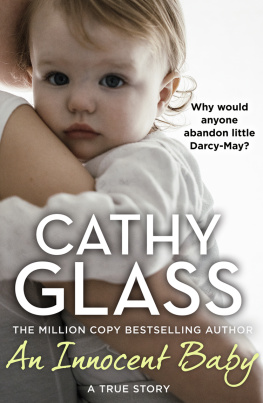
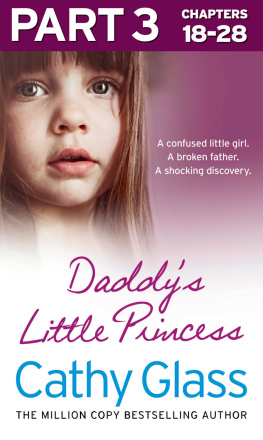
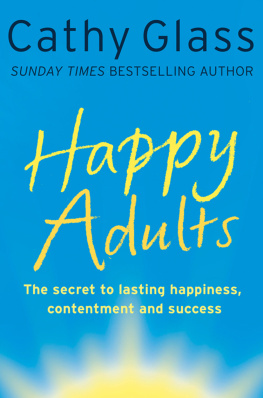
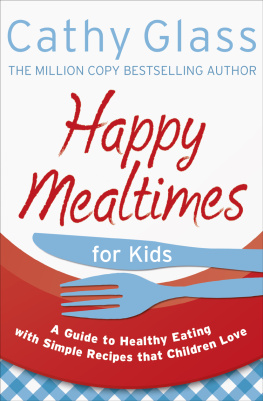
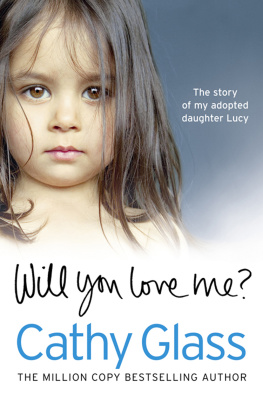
![Glass - Happy adults : [the secret to lasting happiness, contentment and success]](/uploads/posts/book/98405/thumbs/glass-happy-adults-the-secret-to-lasting.jpg)
